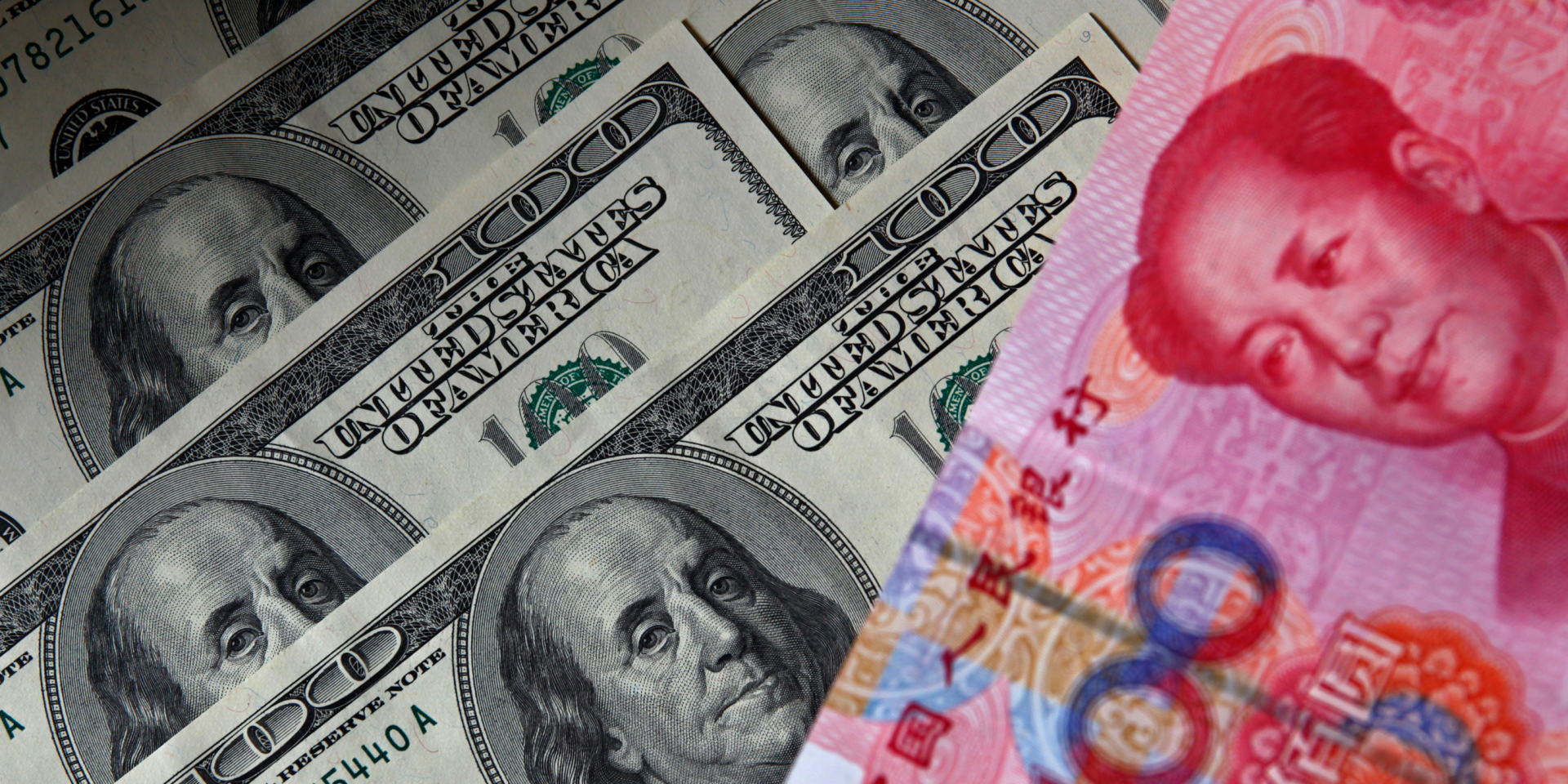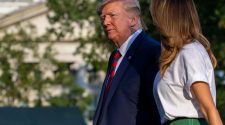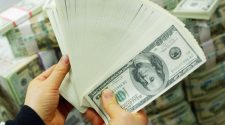- On Monday, China’s central bank allowed the yuan to slide past the key psychological level of 7 per US dollar for the first time since the 2008 financial crisis.
- Many saw the move as retaliation for tariffs recently announced by US President Donald Trump – and markets sold off worldwide on concerns over a trade-war escalation.
- Though the 7-yuan-per-dollar threshold is largely arbitrary, China acknowledged its psychological importance in 2016 when it propped up its currency to avoid crossing that level.
- Traders around the world have been closely watching the key level since Monday, and it’s only growing in significance as the trade war continues.
- Read more on Markets Insider.
China shocked markets on Monday by allowing its currency to weaken past the key level of 7 yuan per US dollar for the first time since the 2008 financial crisis.
Many saw the move as retaliation for tariffs announced by President Donald Trump that are set to take effect September 1. Once instated, they’ll ensure nearly all US imports from China are taxed.
Markets reacted violently to the breach, with US equities tumbling to their worst day of 2019. In the bond market, the three-month and 10-year yield curve – an indicator that’s viewed as a reliable recession signal – inverted to its largest degree since 2007.
Meanwhile, Trump labeled the currency decline a “major violation” and accused China’s central bank of manipulation.
As all of those crosscurrents raged, it became clear that the 7-yuan-per-dollar level was something to be reckoned with. With traders, economists, and central bankers alike now keenly focused on it, the People’s Bank of China’s daily fix – or where it pegs the yuan versus the dollar – has become the market equivalent of appointment viewing.
We further unpack below why the 7-per-dollar level is so significant, how a weaker yuan aids China, and why traders have become so transfixed by the foreign currency:
How does China set its currency’s value?
 REUTERS/Bobby Yip
REUTERS/Bobby Yip
The yuan, unlike other currencies, isn’t freely traded. On a daily basis, the Chinese government fixes the rate of the yuan and then allows it to fluctuate as much as 2% within that set window.
While the yuan didn’t move outside that 2% band on Monday, the fact that it passed 7 for the first time in 11 years was alarming enough for investors.
China has been even more aggressive with its currency in the past. It stepped outside its normal 2% band in August 2015 by weakening the yuan in three consecutive devaluations, cutting more than 3% off its value. That also caused extreme market turmoil.
How does a weaker yuan help China?
 AP Photo/Andy Wong
AP Photo/Andy Wong
Traders, analysts, and economists alike view the move as a contingency against fallout from the US-China trade war, as a weaker yuan gives China an advantage in global trade.
As the yuan becomes cheaper compared with other currencies, Chinese goods become cheaper in other countries. This would counteract the tariffs set by President Donald Trump that are meant to punish China over allegations of intellectual-property theft and other issues.
It’s not all good news for China. A cheaper yuan drives up the price of imports, risking inflation as the Chinese economy is already growing at its slowest rate in three decades. It also motivates traders to turn away from the yuan and other Chinese assets as the weaker currency brings increased volatility.
What does the 7-per-dollar level represent?
 Reuters
Reuters
The US economic cycle is the longest in history, and China’s yuan was most recently allowed to fall to this level in the midst of the Great Recession.
Though the 7-yuan-per-dollar line is largely arbitrary and not set by any specific policy, China has set a precedent for keeping its currency stronger than that floor because of its psychological implications.
That was back in 2016, when the nation faced a sharp yuan depreciation, then subsequently spent more than $107 billion of its foreign-currency reserves in a single month to keep the yuan stronger than the 7-per-dollar level.
The strategy boosted China’s export business but led investors to move their funds out of the country’s economy. It also prompted the US Treasury Department to accuse China of currency manipulation.
Other nations have long scolded the People’s Bank of China for its influence on the yuan, accusing the country of weakening the currency whenever it needs a leg up in global trade.
The bank’s governor recently countered such claims, saying the country “will remain committed to the market-based exchange rate regime, refrain from competitive devaluations, and will not target exchange rate for competitive purposes.”
What does it mean to be labeled a “currency manipulator” by the US Treasury Department?
 Evan Vucci/AP
Evan Vucci/AP
After the yuan fell below the critical level Monday, the Trump administration officially named China a “currency manipulator.” Though the designation is primarily symbolic, it does escalate the trade war by showing a united front from US officials against the Chinese government’s decision.
The International Monetary Fund recently deemed the yuan a fairly valued currency, so the odds are slim that a global entity will intervene. If the label sticks, however, Trump may use it to continue raising tariffs or sway his supporters’ opinions against China.
The trade war rages on, but the weaker yuan has now prompted a so-called “currency war.” Trump has repeatedly called for a weaker dollar, and a prolonged conflict could see both countries fighting to bring their respective currencies lower than before. There have even been reports of the president looking to manipulate the dollar against the yuan to combat China’s actions.
Why does Wall Street care so much about the foreign currency?
 Henny Ray Abrams/AP
Henny Ray Abrams/AP
With the US-China trade conflict dragging into its second year, investors and analysts are desperate for a sign that the two countries are on their way to making a deal.
US stocks saw their worst day of the year after the yuan crossed the psychological level, as the move indicates China is nowhere close to backing down in the trade war. The country also reneged on its plans to buy US agricultural products, placing a far more immediate pressure on the US economy.
The trade war is playing a massive role in slowing global growth and prompting rate cuts from central banks. Wall Street is holding its breath as it waits to see whether the Federal Reserve can head off a recession, but Fed Chair Jerome Powell cited overall uncertainties as a main reason for the first interest-rate cut since the financial crisis.
The unpredictability of both countries’ actions leaves Wall Street in the dark. Numerous economic indicators – namely the yield curve and the New York Fed’s recession probability model – point to the historic economic expansion coming to a close.
The 7-yuan-per-dollar breach is just one part of the complex trade war, but the currency’s movement signaled to investors that neither country is in the clear.


















